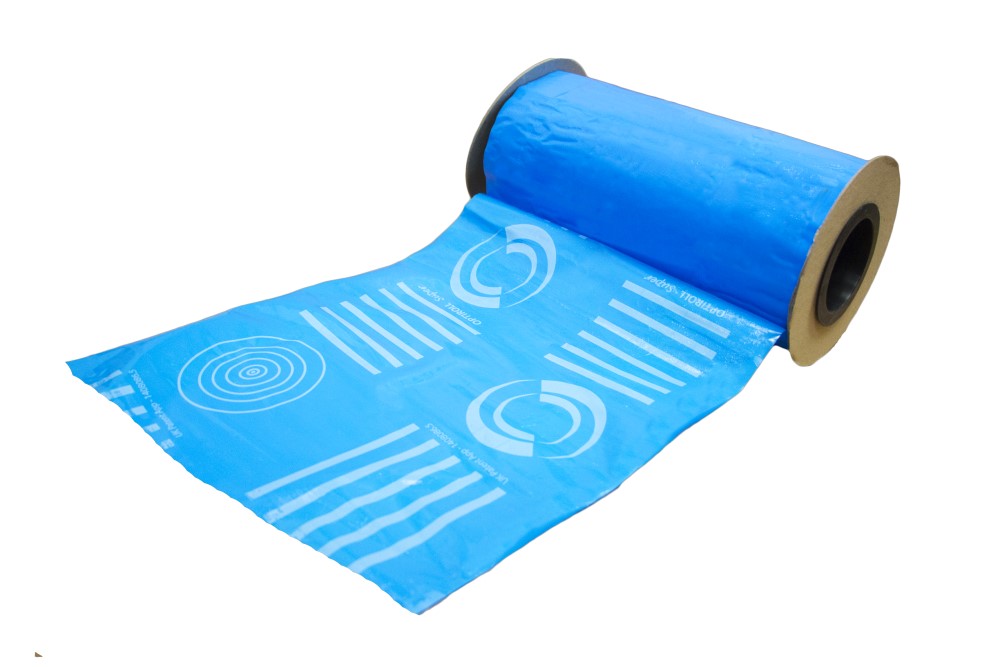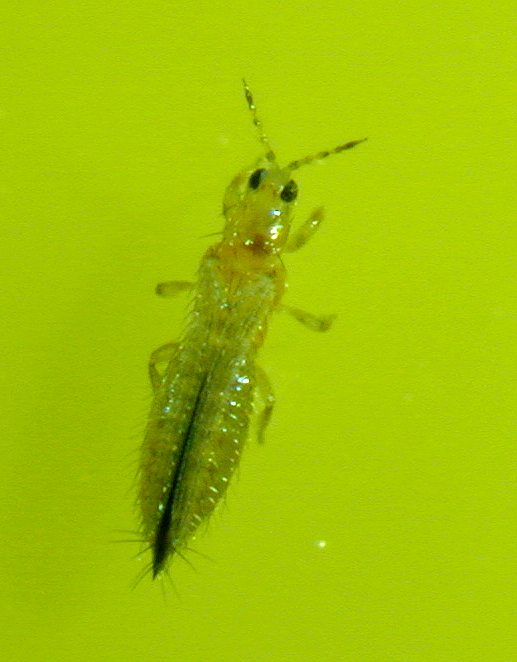Please click here to access the main AHDB website and other sectors.
- Home
- Knowledge library
- Sources of thrips infestations in protected ornamental crops and monitoring
Sources of thrips infestations in protected ornamental crops and monitoring
Identify and minimise the potential sources of thrips infestations and determine the best way of monitoring to help plan management strategies.
Back to: Thrips control in protected ornamental crops
Sources of thrips infestations
Consideration of the potential sources of thrips is very important when planning any thrips management programmes. Sources of infestation include:
- The resident population in the glasshouse or polythene tunnel, particularly where host crops are present all year round. This is the most common source of the main thrips pest species, western flower thrips (WFT)
- Bought in cuttings, young plants or finished plants infested with thrips adults, larvae or eggs, or pupae in the growing media. Importing plant material increases the risk of alien or quarantine species
- Plant debris from previous infested crops
- Soil, growing media, used matting, pots and trays containing thrips pupae
- Adjacent infested crops in nearby structures or field crops
- Weed hosts, both inside and outside the structure
In-crop monitoring
A regular monitoring programme, designed to spot the first sign of thrips and to detect any ‘hot spots’ or increase in population levels is critical for successful thrips management. When susceptible crops or imported plant material is present, both sticky traps and plants should be monitored throughout the year.
Some thrips species can be distinguished from others by a trained member of staff using a hand lens to focus on recognition features such as body and wing colour. However, the species can only be confirmed by an entomologist using a microscope and diagnostic key, or by using a molecular diagnostic method.
Traps
Sticky traps
Adult thrips can be attracted to both yellow and blue sticky traps, depending on thrips species and colour wavelength. Blue traps can be more effective than yellow at detecting low densities of western flower thrips (WTF). However, in low light levels, yellow can be more effective in catching WFT. Yellow traps will catch most thrips species and thrips are more easily seen on yellow than blue. Yellow traps are also useful for monitoring other pests such as whiteflies and leaf miners. However, yellow may also attract flying adult parasitoids used for biological control of other pests.
Japanese flower thrips have been caught on both blue and yellow traps on UK nurseries, but it is not yet known which colour is most effective for trapping this species. In the Netherlands on Hydrangea, sticky traps are not used for monitoring this species as more are found on the plants than on the traps.
Position traps over favourite host plants, imported plants and near to doorways.
Within crops, position traps just above the plants using canes and move them up as the plants grow. If using flying biological control agents, place the base of the traps 10–20 cm above the plants to reduce the number of control agents caught. Only use as many traps as can practically be checked every week (one per 500 m2). More (one per 100 m2) can be used in smaller glasshouses or tunnels, or in high risk situations, or when monitoring different crops in the same glasshouse. Check traps weekly and record the number of pest thrips species and replace traps regularly.
Roller traps
Long blue or yellow ‘roller traps’ are available for ‘mass monitoring’ or trapping large numbers of thrips. Blue roller traps have been tested in strawberry crops as part of an IPM programme for control of WFT together with predators, and have been shown to help reduce numbers of thrips and crop damage in high thrips populations. They may also have a role in helping to reduce thrips in ornamental crops. One roller trap product (Optiroll Super Blue) has white patterns on the blue which claims to increase thrips attraction and numbers caught.
Optiroll Super Blue with white patterns is claimed to trap more thrips than plain blue roller traps

Image © Russell IPM.
Western flower thrips adult female on sticky trap

Image © ADAS Horticulture.
Lures and semiochemicals
Thrips lures
Three semiochemical lures are available, designed to increase sticky trap catches of thrips, to aid detection at low thrips densities and help indicate population increases.
A sex aggregation pheromone specific to WFT (Thripline) is available from Bioline AgroSciences. This is a synthetic version of the pheromone produced by WFT males and attracts both male and female WFT for mating. The pheromone is supplied as small rubber lures which are stuck onto the lower section of sticky traps, or roller traps are available with the pheromone incorporated into the glue.
A thrips attractant (Lurem-TR) for various thrips species including WFT and onion thrips is available from Koppert. As the attractant is not selective, it will not help to distinguish thrips species on traps. The lure is supplied in small slow-release dispensers for sticking onto sticky traps.
Another new thrips attractant (Thripnok) became available in 2021 from Russell IPM. The lure attracts various species of flower-dwelling thrips including WFT and onion thrips, and is supplied as small dispensers for sticking onto sticky traps. Thripnok is also claimed to improve the performance of plant protection products and biological controls, by drawing the thrips out of flowers.
Other semiochemicals
A semiochemical product (Magipal) is available that claims to attract various natural enemies and has also been shown in an initial study to help repel WFT from strawberry plants. A current AHDB research project (SF 174) is investigating a ‘push-pull’ strategy to help manage thrips species in strawberry, by ‘pushing’ them from the crop with Magipal and ‘pulling’ them to blue roller traps baited with Lurem-TR lures. If this research gives promising results the strategy may have potential for use in other protected crops including ornamentals.
Plant monitoring
Sticky traps alone should not be relied upon for accurate monitoring of thrips. Check known susceptible plant species every week throughout the production period. Thrips can be present on both upper and lower leaf surfaces and in growing points, buds and flowers. A useful method for monitoring flower-dwelling species such as WFT is to tap young growth and flowers onto a white plastic tray or white paper on a clipboard. Any dislodged thrips adults and larvae can be seen on the tray or paper.
Look for direct damage symptoms such as leaf silvering or scarring, white flecking on leaves or petals, distorted young leaves, buds and flowers. Check for symptoms of thrips-transmitted viruses. Use favourite host plants or those particularly susceptible to damage as ‘indicator plants’. For instance, flowering Verbena is very attractive to WFT, while WFT petal damage shows up more on Chrysanthemum varieties with dark pink, orange or red flowers. Petunias can be used as indicator plants for tomato spotted wilt virus. Within a few days of feeding by viruliferous WFT, dark leaf spots develop.
Pay attention to recently bought-in plants or cuttings, especially if imported. Get thrips species confirmed by an entomologist and if any thrips are suspected to be a quarantine species, notify APHA immediately.
Useful links
For further guidance on monitoring, see the ‘Top 10 tips to achieve a successful biological pest control programme’ and the biological control videos covering monitoring and sticky traps on the AHDB website.
Authors
Jude Bennison, ADAS Horticulture.
Got a question? Ask a member of the team:
Web page content correct as of May 2021.
Topics:
Sectors:
Tags:

